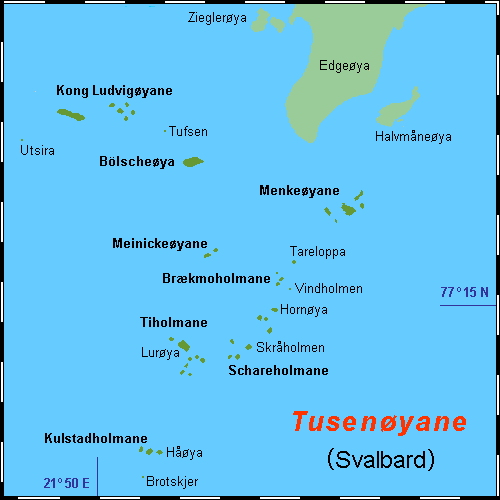|
Teisten
Teisten () is an islet in Menkeøyane, part of Thousand Islands, a Norwegian island group south of Edgeøya Edgeøya (), anglicised as Edge Island, is a Norway, Norwegian island located in southeast of the Svalbard archipelago; with an area of , it is the third-largest island in this archipelago. An Arctic island, it forms part of the Søraust-Svalbard .... References * Norwegian Polar InstitutPlace Names of Svalbard Database Islands of Svalbard {{svalbard-geo-stub ... [...More Info...] [...Related Items...] OR: [Wikipedia] [Google] [Baidu] |
Menkeøyane
Menkeøyane () is a small Norwegian island group south of Halvmåneøya, an island off the southeast coast of Edgeøya Edgeøya (), anglicised as Edge Island, is a Norway, Norwegian island located in southeast of the Svalbard archipelago; with an area of , it is the third-largest island in this archipelago. An Arctic island, it forms part of the Søraust-Svalbard .... The group includes Havella, Alka, Gassen, Teisten, Islomen and Blåmåken. They comprise part of Thousand Islands. The islands are named after the German cartographer and historical geographer Heinrich Theodor Menke (1819–92). The islands appear on the Muscovy Company's map (1625), one of which is labeled ''Heling I''. References * Norwegian Polar InstitutPlace Names of Svalbard Database*Purchas, S. 1625. Hakluytus Posthumus or Purchas His Pilgrimes: Contayning a History of the World in Sea Voyages and Lande Travells by Englishmen and others. Volumes XIII and XIV (Reprint 1906 J. Maclehose and sons). ... [...More Info...] [...Related Items...] OR: [Wikipedia] [Google] [Baidu] |
Black Guillemot
The black guillemot or tystie (''Cepphus grylle'') is a medium-sized seabird of the Alcidae family, native throughout northern Atlantic coasts and eastern North American coasts. It is resident in much of its range, but large populations from the high arctic migrate southwards in winter. The bird can be seen in and around its breeding habitat of rocky shores, cliffs and islands in single or smalls groups of pairs. They feed mainly by diving towards the sea floor feeding on fish, crustaceans or other benthic invertebrates. They are listed on the IUCN red list as a species of least concern. Both sexes have very similar appearances with black plumage and a large white patch on the upper side of their wings in summer. The bill is also black, being rather long and slender, while the feet are coral-red. In winter adult underparts are white and the upperparts are a pale grey with the back and shoulders exhibiting barred light grey and white patterning. The birds breed in solitary pairs o ... [...More Info...] [...Related Items...] OR: [Wikipedia] [Google] [Baidu] |
Thousand Islands (Svalbard)
Thousand IslandsDodd, G. J., G. P. Benson, & D. T. Watts. 1996. ''Arctic Pilot'', vol. 2. Taunton, UK: Hydrographer of the Navy, p. 225. () is a group of small islands south of Edgeøya. They form part of the Svalbard archipelago. The group consists of over forty islands and islets, including Brotskjer, Kulstadholmane, Utsira, Tufsen, Kong Ludvigøyane, Bölscheøya, Hornøya, Tiholmane, Meinickeøyane, Sletteøya, Schareholmane, Skråholmen, Brækmoholmane, Tareloppa, Vindholmen, and Menkeøyane. History The Dutchman Joris Carolus was the first to distinctly mark a group of small islands south of Edgeøya. The Muscovy Company's map (1625) showed a vague mass of islands as well, some labeled, such as ''Wester I.'', ''Beare Iland'', ''Heling I.'', and the ''Hopeless Iles.'' (perhaps Kong Ludvigøyane). The cartographers Gerard Valck and Peter Schenk the Elder Petrus Schenck, or Pieter, or Peter Schenk the Elder (baptized: 26 December 1660 – between ... [...More Info...] [...Related Items...] OR: [Wikipedia] [Google] [Baidu] |
Norway
Norway, officially the Kingdom of Norway, is a Nordic countries, Nordic country located on the Scandinavian Peninsula in Northern Europe. The remote Arctic island of Jan Mayen and the archipelago of Svalbard also form part of the Kingdom of Norway. Bouvet Island, located in the Subantarctic, is a Dependencies of Norway, dependency, and not a part of the Kingdom; Norway also Territorial claims in Antarctica, claims the Antarctic territories of Peter I Island and Queen Maud Land. Norway has a population of 5.6 million. Its capital and largest city is Oslo. The country has a total area of . The country shares a long eastern border with Sweden, and is bordered by Finland and Russia to the northeast. Norway has an extensive coastline facing the Skagerrak strait, the North Atlantic Ocean, and the Barents Sea. The unified kingdom of Norway was established in 872 as a merger of Petty kingdoms of Norway, petty kingdoms and has existed continuously for years. From 1537 to 1814, Norway ... [...More Info...] [...Related Items...] OR: [Wikipedia] [Google] [Baidu] |
Edgeøya
Edgeøya (), anglicised as Edge Island, is a Norway, Norwegian island located in southeast of the Svalbard archipelago; with an area of , it is the third-largest island in this archipelago. An Arctic island, it forms part of the Søraust-Svalbard Nature Reserve, home to polar bears and reindeer. An ice field covers its eastern side. The island takes its name from Thomas Edge (died 1624), an England, English merchant and whaling, whaler. It is seldom visited today and development of tourist facilities is forbidden by law because of its nature reserve status. History The history of Edgeøya's discovery has been a matter of dispute. Thomas Edge, writing in 1622, claimed the island was discovered by one of his ships in 1616. However, Joris Carolus, in a map published in 1614 and allegedly based on discoveries made by him the same year, shows what appears to be Edgeøya's south coast. Carolus showed the coastline split into two parts: "Onbekende Cust" (meaning "Unknown Coast" in Dutc ... [...More Info...] [...Related Items...] OR: [Wikipedia] [Google] [Baidu] |


